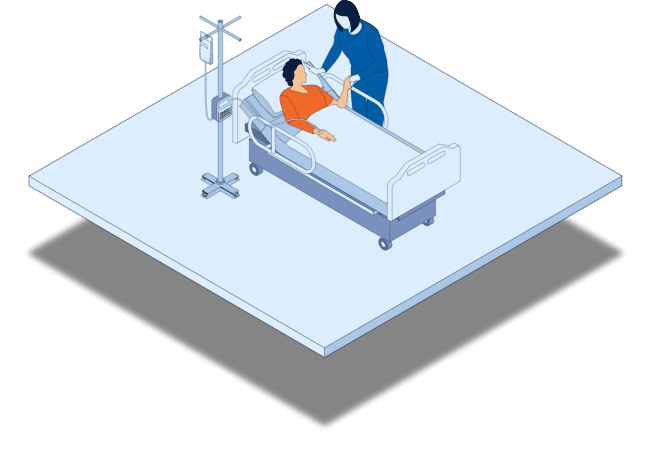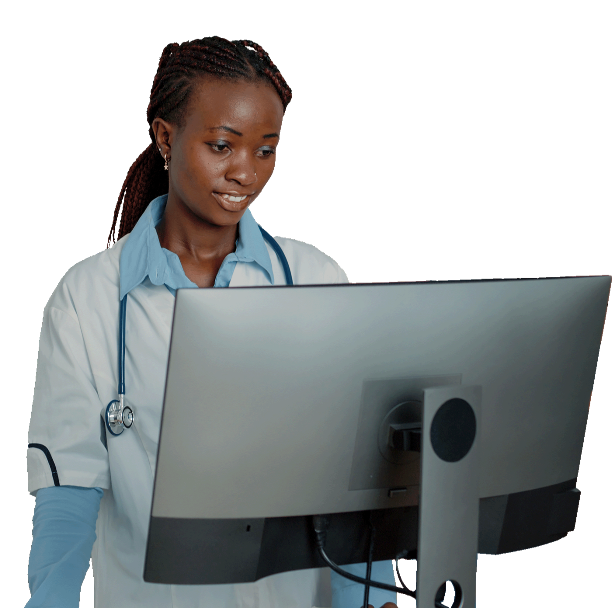Keeping track of medical assets across a healthcare facility is crucial for maintaining smooth operations and ensuring the highest quality of patient care.
Traditional methods like spreadsheets and paper-based systems allow hospital staff to record and log the whereabouts of equipment, but they require manual input to stay current.
By utilizing RTLS technology to inventory and track medical equipment and other hospital assets, the real-time location of critical equipment becomes entirely automated. This workflow orchestration enhances coordinated patient care, allowing staff to focus on the most important task: delivering high-quality healthcare to patients.
Tackling Healthcare Asset
Tracking Challenges with RTLS
When it comes to managing the numerous medical devices regularly needed across a hospital, many healthcare facilities encounter the same challenges, stemming from similar difficulties:
- Healthcare providers lack sufficient insight into medical equipment
- Over-stretched hospital staff results in delays in the delivery of critical devices
- There is typically more than enough essential medical equipment for each patient, but in the wrong place
- A lack of trust around medical asset management leads to hoarding
- Inefficient management of maintenance needlessly ties up valuable medical assets
- Lack of reporting and alerting to PAR-level adherence
Paired with a comprehensive healthcare asset tracking software, medical assets can be located with ease.
Fitting RTLS tags to medical equipment alleviates much of the strain placed on hospital staff by making healthcare assets easily trackable, both in regard to their specific location and status.
With AiRISTA’s RTLS healthcare asset tracking solution — Sofia — medical assets are managed via useful dashboards with direct access to maps, equipment status, and other relevant information.
The solution leverages your existing Wi-Fi infrastructure, making it unobtrusive in implementation and fully integrated into your pre-existing working structure.
How Does Hospital Asset
Tracking Work?
Real-World Results: RTLS for IV Pumps and Asset Utilization
The AiRISTA RTLS solution was deployed by a hospital to increase asset utilization rates for IV pumps.
- Increase in asset utilization rates from 32% to 65%.
- Reduction in IV pump purchase from 1200 to 780 devices.
Utilization statistics show the average hospital requires an average of 2.5 IV pumps per room, well more than one extra per pump in use. And if asked, most clinical staff would want more.
Due to inefficient maintenance management, hoarding, “lost”, and non-strategic placement, utilization rates in the low 30% range are accepted.


AiRISTA Asset
Tracking Webinar
Benefits of RTLS for Healthcare Asset Management
Tracking medical devices with RTLS allows medical asset managers to not only improve inventory keeping and increase visibility of where equipment is located, but also distribute items more strategically across the hospital.
Using data gathered from RTLS tracking in a healthcare facility, it becomes easier to identify high asset volume areas. The most relevant and necessary resources can then be deployed to hot zones to increase usage and reduce the need for additional equipment purchases.
By tracking medical assets with a combination of RTLS tags and sofia’s advanced equipment inventory software, you’re able to better optimize their usage and maintenance.
A Real-World Example: Customer Experience
A 380-bed regional medical center with a pre RTLS deployment inventory of 1200 IV pumps with an in-use rate of 30%.
- After deployment of the AiRISTA solution, the “in-use” rate increased to 65%
- The most recent IV pump purchase was reduced to 780 IV pumps resulting in a savings greater than $1MM.
DEPLOYMENT DETAILS
- Management Platform: AiRISTA sofia software platform
- Infrastructure: Existing Cisco WiFi infrastructure
- Asset RTLS Tags: AiRISTA A4 WiFi/BLE Asset Tag
- Integrations: BD Infusion System Software
- Deployment time: 21 days
Ready to Improve Your Healthcare Asset Management?
Enhance your hospital’s operational efficiency and patient care by adopting a robust healthcare asset tracking solution. With AiRISTA’s RTLS technology, you can streamline medical asset management, reduce unnecessary equipment purchases, and ensure critical medical devices are always where they need to be. Don’t let inefficient hospital asset utilization hinder your healthcare operations. Embrace a solution that offers real-time visibility, improved resource allocation, and seamless integration into your existing systems.
Take the next step towards optimizing your healthcare facility’s asset management. Get in touch today and discover how AiRISTA’s healthcare asset tracking software can transform your asset tracking and management strategies.


